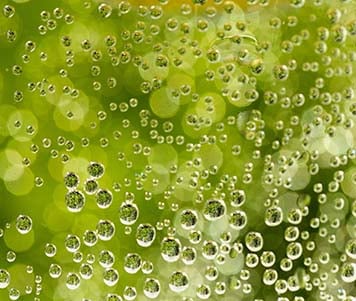
Depending on the type of creation or invention there are all kinds of ways to protect intellectual property to prevent others from using it. These include conventional forms like patents, trademarks, copyrights and so on. But this my top 3 of non-conventional forms of protection.
1. Scent trademark
Scents can make a strong contribution to how people perceive a brand, product or service, when it is diffused in a shop or building, for example. In a relaxation area at Schiphol, for example, there is synthetic grass which, thanks to the smell of freshly cut grass, comes across very realistically indeed. It is not easy to protect scent trademarks as intellectual property. In Europe, to qualify for registration, trademarks are subject to a graphical representability requirement. In the case of scents that is not exactly an easy thing to do, although someone did once manage to register grass-scented tennis balls. The European Court of Justice is of the opinion that, for the registration of a scent trademark, it is not enough to provide a description, a scientific formula or deposit a scent sample.
In the UK and US the law appears to be a bit more flexible when it comes to scents. In the UK someone managed to register beer-scented darts in the late nineteen nineties. The person who registered this product felt that a description of a scent on paper is definitely a graphic representation of the scent. The Patent Office agreed, which meant that Unicorn was able to bring darts with a strong smell of bitter onto the market.
In the US various scent trademarks have been successfully registered, such as plumeria blossom-scented embroidery thread and strawberry scented lubricants.
2. Colour trademark
A colour can be recorded graphically by means of the internationally recognised RAL and Pantone colour codes. A colour trademark will generally be claimed and monopolised on the basis of identification. This means that the specific colour must have been in intensive, consistent and long-term use in combination with a trade name. Consumers will then start to identify that colour with the relevant brand. BP's yellow and green and the Dutch tax authority's blue and purple make them instantly recognisable. Telecommunications companies also all use their own particular colour in their corporate design.
3. Sound trademark
Music can be graphically represented in the form of a staff which is useful for jingles. It is a bit trickier to register other sounds. The European Court, for example, feels that descriptions such as 'the sound of a cockerel' or 'the yell produced by Tarzan' are too vague. The US is more flexible in this case too as, over there, it was possible for MGM to register the roar of the MGM lion as a sound trademark and for Harley Davidson to register the unique sound of its engines.
The bodies responsible for registering trademarks are moving with the times. The OHIM, the Office for Harmonisation in the Internal Market, is accepting digital files such as videos and MP3 files for registration, for example. Incidentally, music is always automatically covered by copyright, so there is no need for you to register a song or piece of music when you release it.









